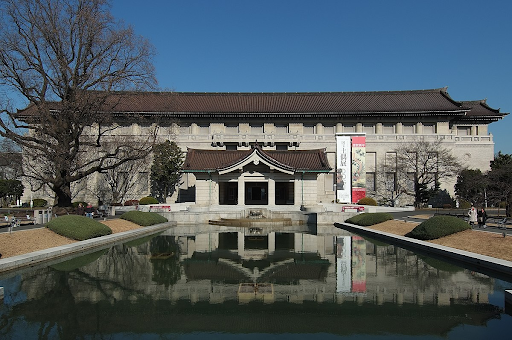Etiquette refers to a code of conduct (usually unwritten) rules of behavior unique for each country and culture. Following an etiquette can earn you respect when you visit a friend’s house, a neighbor and another country. Doing the opposite may result in embarrassment or cultural alienation/shock - difficulty in integrating into other countries’ culture. Japan, a country known for its high literacy rate and advanced technology, is also a country of etiquette. When your next stop is Japan, knowing etiquette rules is handy when you live with locals.
Do's.
1. Remove shoes before entering the genkan or entryway.
The Genkan refers to the peculiar space that serves as the point for removing slippers and shoes. It’s customary to remove your footwear before entering indoors and enter by barefoot or in a sock. Your Japanese host will offer you an indoor slipper. This etiquette is also true in hot spring resorts, temples, schools and shrines.
The ritual of taking off shoes came from the Meiji period when raised storehouses were used to store rice paddy. Such storehouses were considered sacred and so bringing shoes or slippers inside is considered a bad manner.
Further, the Japanese also has separate slippers for bathroom use. If you’re not sure whether to use your shoes inside, observe your colleagues or other people when they enter the premises. The rationale for leaving footwear outside is to keep indoors clean from grime, mud, and dust.
So where should you take off your shoes beside a home? Here are the other places:
* Some izakaya restaurants ( a type of informal restaurant that serve casual dining)
* Shrines and temples
* Schools
2. Bring omiyage or a type of souvenir or gift.
Before visiting a Japanese family, co-worker or friend, you can bring a brightly colored drink for your host. The best omiyage are:
* Something local or unique from your place
* Consumables such as snacks, chocolates, candies, and postcards. For men: you can bring beer and nuts;
For women: accessories, hair care products, kitchen tools. For kids: toys.
* Wrapped gifts
Presenting an omiyage has its etiquette such as:
* Holding an omiyage with both hands
* Bowing while giving the omiyage, looking down at the floor and not facing your host.
* Saying the phrase “tsumaranai mono desu ga” that means: This is a trifling thing, but please accept it.
3. Slurp your ramen or noodle bowl
Slurping ramen, udon, soba, noodle or a bowl of soup means that you enjoy the food and it shows that you appreciate the cook’s effort. Slurping also cools down the food.
4. Eat soup with a chopstick
Bring a solid food into your mouth by using a chopstick. Such food includes udon noodles, ramen, miso soup, chankonabe, hot pot, and nikujaga.
5. Observe some seiza or sitting position.
The Japanese people usually use tatami or reed mat. In a formal ceremony or gathering, the seiza position (heels with legs tucked underneath your butt) is usually followed but such position can be uncomfortable for some. Your host may tell you to get comfortable and suggest a position best suited for you. For men, they may sit in a cross-legged position if that keeps them comfortable and for women with their legs tucked inside. However, more Japanese people and the younger generation use chairs and hardwood flooring.
Don'ts
1. Don’t use a chopstick to spear a food
Unless you are hunting down a goldfish in a shallow puddle, spearing food with a chopstick is considered rude. If the food is hard to pick use a fork instead.
2. Don’t play with a chopstick
Keeping chopsticks upright in a bowl and passing food to someone using a chopstick is similar to picking the dead’s bone fragments after cremation. Doing that means inviting bad luck.
3. Don’t eat while walking
Eating and drinking while walking are not necessarily rude but rather it’s seldom or never done by the Japanese. So doing such three-in-one activity might be seen as bizarre behavior. Some may think that a person is on the hurry or can’t afford a decent place to eat. A sign in Asakusa (a district in Tokyo) has this signage “no eating while walking”.
Social etiquette
Dos
1. Bow
Bowing is a form of social expression akin to shaking hands in western culture. Japanese people bow when they show apology, express gratitude, ask a favor, begin a training session, congratulate someone, sympathize, say goodbye and greet. Japanese companies train their employees in bowing. To bow properly, you have to:
* Bend at your waist
* Keep your neck and back straight
* Keep your feet together
* Keep your eyes downward
* Have hands straight in your side.
The deeper and the longer the bow, the more you show respect and submission. Often people in higher social positions bow lightly than their lower counterparts. Today, the Japanese also shake hands along with a bow.
2. Learn some basic Japanese and phrases
The Japanese people are known for their nationalism - that is they put their culture, language, and products in their priority list over foreign ones. Although it’s ok to speak in English or some of your tongue, you can’t expect most locals to speak fluently in that language. They’ll greatly appreciate a foreigner learning a phrase even it’s a broken one. You can start by learning phrases and if you have time and resource learn the Japanese characters (kanji, katakana, hiragana), romaji (latinized Japanese) and grammar.
* Moshi moshi (もしもし)
This is used over the phone to say “hello”. It came from the verb もうす mōsu
* Irasshaimase (いらっしゃいませ)
A formal greeting that means welcome.
* Genki? (元気)
An informal greeting that means
* Ohayō (おはよう)
It’s an informal phrase meaning “Good morning” to greet close friends, family and fiance.
* Mou ichido onegai shimasu (もう一度お願いします)
Could you repeat that, please?
* Wakarimasen (わかりません)
I don’t understand
* Konnichiwa (こんにちは)
Means hello and literally “today”. It’s used in daytime only.
3. Be quiet inside trains
Trains such as the shinkansen are full of commuting and busy people who are usually tired from days work. It’s common to find people dozing off while they travel. Things that are rude include playing loud music (use earphones) calling over a smartphone. You can keep your phone silent until you alight the train.
4. Do Kanpai before drinking
The Japanese who are tired from work gather in a party called Nomikai. Nomikai is their way of relaxing, forging a relationship, and easing stress. They follow a customary of raising their glass (Kanpai) before taking a sip. Kanpai is like western culture’s cheers.
Don'ts
1. Don’t jaywalk
Japan observes its traffic rules strictly and simply crossing in a non-pedestrian area might result in ticket violations.
2. Don’t tip in restaurants and transport services.
Tipping is common in most western and Arab countries but in Japan it’s different. Tipping in a restaurant, taxi or bus is not customary. If you do, a waitress or driver might chase you to return your tips.
3. Don’t engage in a public display of affection
It’s not common to touch or getting near a stranger unless he or she is your close friend or you have been offered a hug or forced to stay inside a crowded space such as train, bus, and elevator.
These Japanese etiquettes are not hard-fast rules where the locals would expect you to follow all. You might break some etiquette but your Japanese friend or host will just understand that. Like any human being, you can never go wrong if you go to a foreign country with knowledge of a little bit of their culture and show your kindness and respect. After all, we are all human beings. Other than that, enjoy your stay in Japan, where many people are hospitable and friendly.






